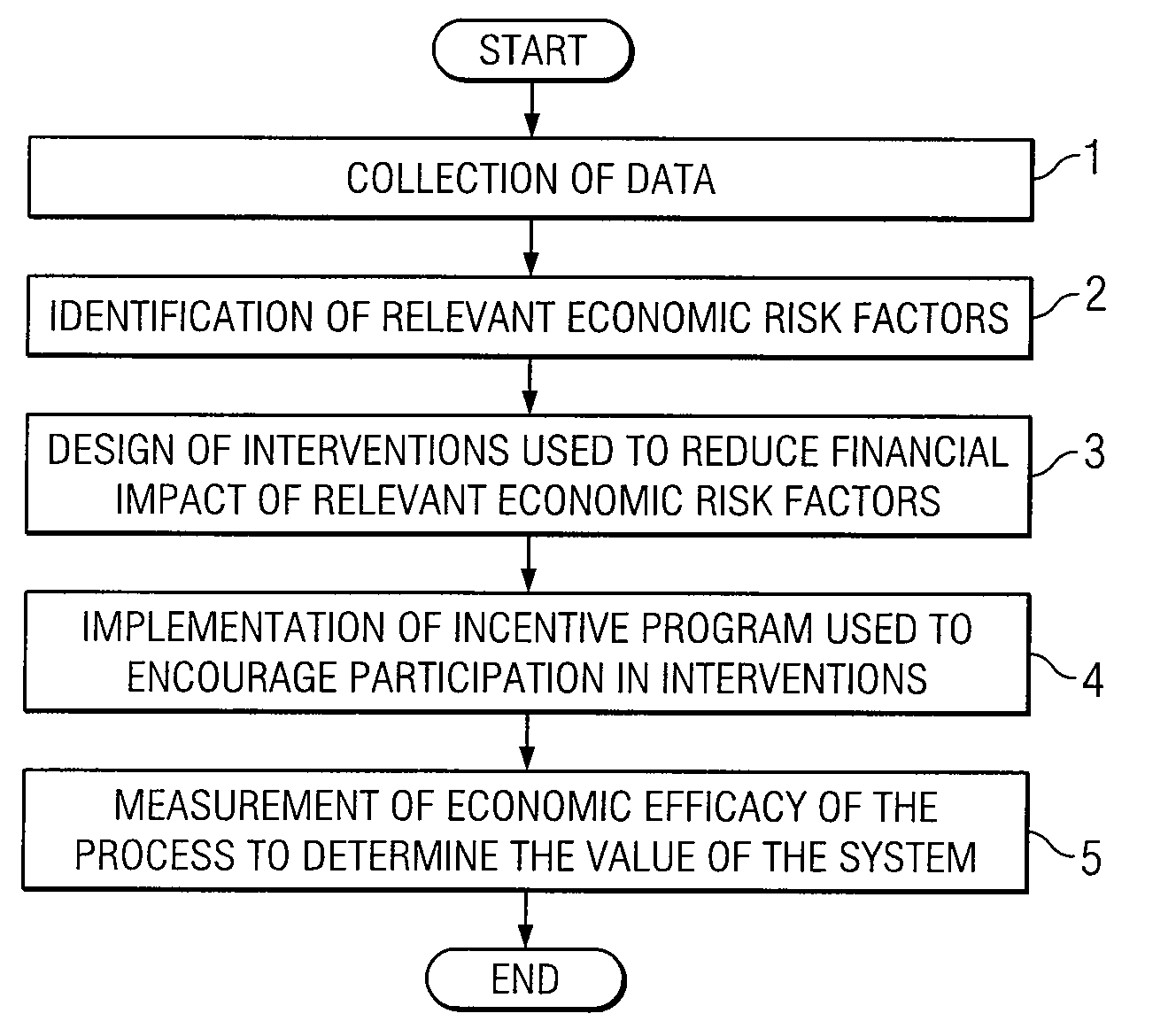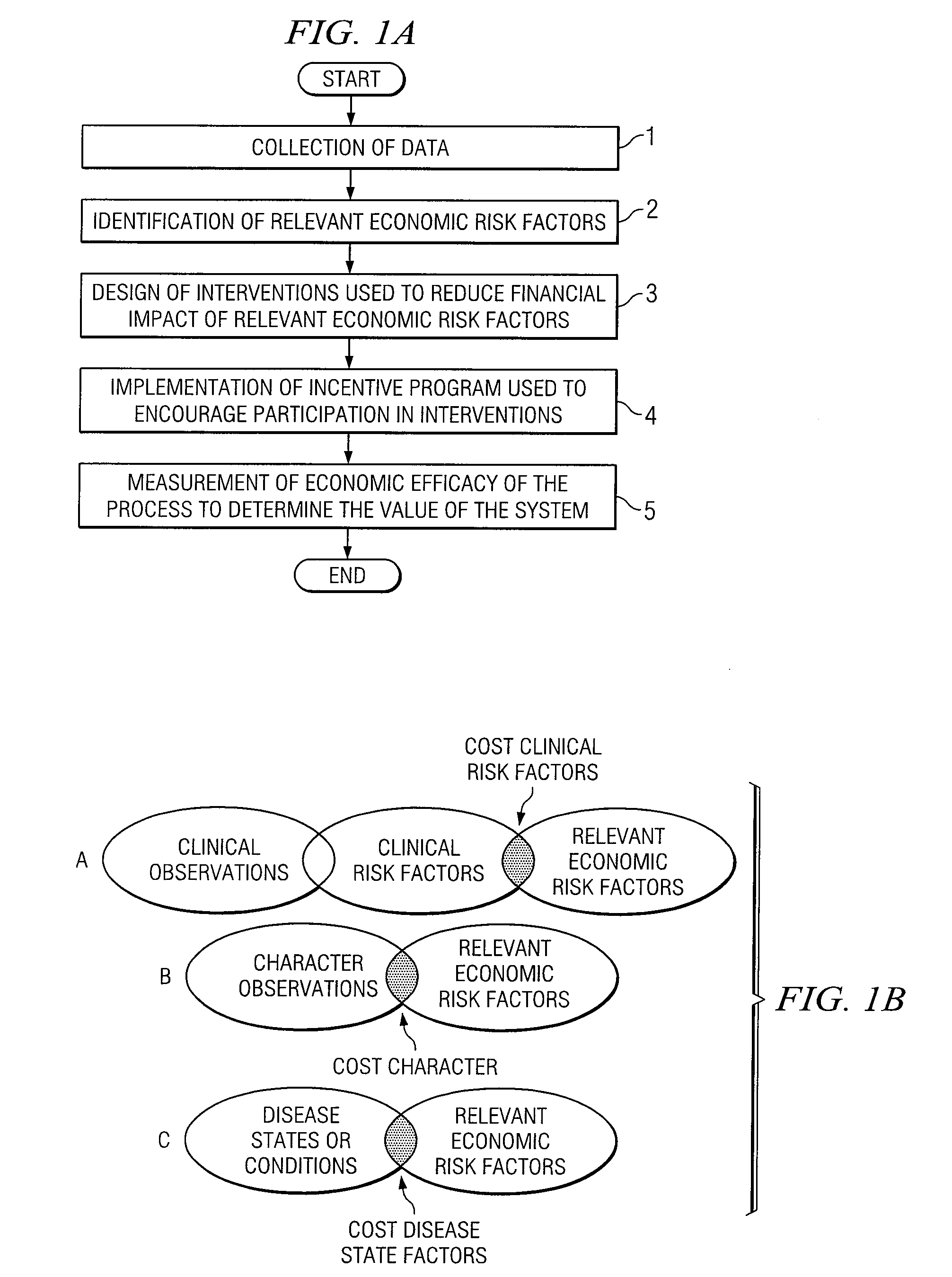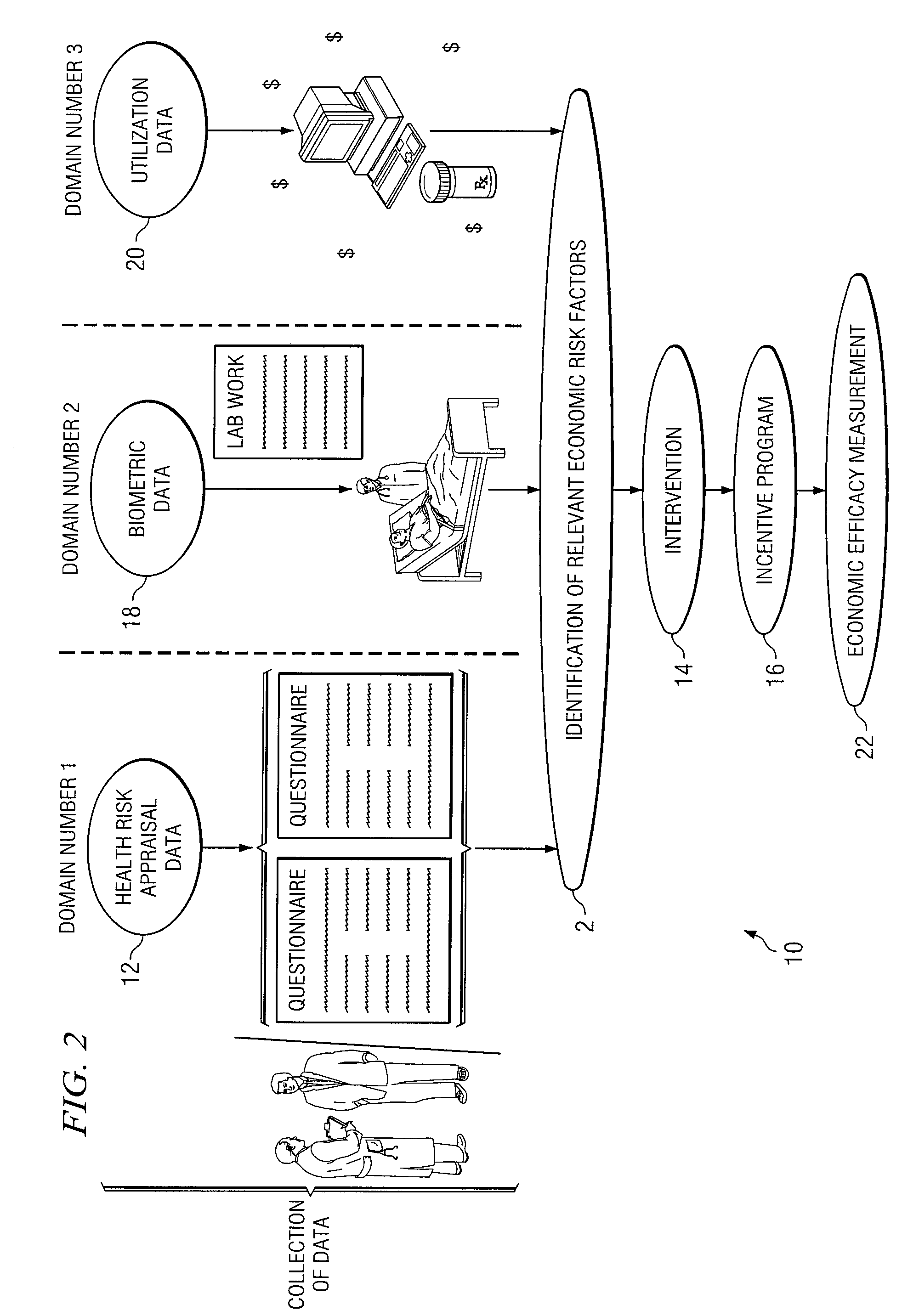System and method for managing health risks
a health risk and system technology, applied in the field of health management, can solve the problems of unfavorable employer health care, and unfavorable employer health care, and achieve the effects of reducing billing rates, generating healthcare expenditures, and reducing healthcare costs
- Summary
- Abstract
- Description
- Claims
- Application Information
AI Technical Summary
Benefits of technology
Problems solved by technology
Method used
Image
Examples
Embodiment Construction
[0034]For purposes of teaching and discussion, it is useful to provide some overview as to the way in which the following invention operates. The following foundational information may be viewed as a basis from which the present invention may be properly explained. Such information is offered earnestly for purposes of explanation only and, accordingly, should not be construed in any way to limit the broad scope of the present invention and its potential applications.
[0035]Managing expenses is critical in any business environment. Much could be learned from the corporate titans of the 19th and 20th centuries. For example, Andrew Carnegie (founder of U.S. Steel) once noted: “find the cost and reduce it.” His relentless efforts to drive down costs and to undersell the competition made his steel mills the most modern in the world: the models for the entire industry. A person cannot lower expenses until a person has identified the cost. This ideology is so important that it needs to be r...
PUM
 Login to View More
Login to View More Abstract
Description
Claims
Application Information
 Login to View More
Login to View More - R&D
- Intellectual Property
- Life Sciences
- Materials
- Tech Scout
- Unparalleled Data Quality
- Higher Quality Content
- 60% Fewer Hallucinations
Browse by: Latest US Patents, China's latest patents, Technical Efficacy Thesaurus, Application Domain, Technology Topic, Popular Technical Reports.
© 2025 PatSnap. All rights reserved.Legal|Privacy policy|Modern Slavery Act Transparency Statement|Sitemap|About US| Contact US: help@patsnap.com



